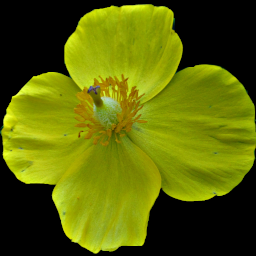Also known as Sachalin. The lesser-known of two beautiful but pernicious Japanese invaders, Giant Knotweed closely resembles its cousin the Japanese Knotweed (F. japonica), but can be distinguished by the leaves, which are longer and pointier and have a heart-shaped base rather than the rounded base of F. japonica. Like the Japanese Knotweed, Giant Knotweed can form large colonies that completely exclude other species of vegetation. These plants grew in an old German cemetery in Beechview, where they were blooming in the middle of September.
Because this imported weed was not so weedy in Gray’s time, we turn to the on-line Flora of North America at efloras.org:
Fallopia Adanson, Fam. Pl. 2: 277, 557. 1763.
[name conserved]
False-buckwheat [for Gabriello Fallopio, 1532-1562, Italian anatomist] Craig C. Freeman, Harold R. Hinds. Bilderdykia Dumortier.
Vines or herbs, annual or perennial; roots fibrous or woody; sometimes rhizomatous. Stems erect to scandent, rarely procumbent, glabrous or pubescent. Leaves deciduous, cauline, alternate, petiolate; ocrea persistent or deciduous, chartaceous; petiole base articulated, extrafloral nectaries sometimes present; blade broadly ovate to triangular, margins entire or wavy. Inflorescences terminal and spikelike, or terminal and axillary and paniclelike or racemelike, pedunculate or not. Pedicels present. Flowers bisexual, or bisexual and unisexual, some plants with bisexual flowers, other plants with only pistallate flowers 1-5 per ocreate fascicle, base stipelike; perianth usually accrescent in fruit, pale green or white to pink, campanulate, glabrous or, rarely, with blunt, hyaline hairs; tepals 5, connate nearly completely or only basally, petaloid, dimorphic, outer 3 winged or keeled, larger than inner 2; stamens 6-8; filaments distinct, free, glabrous or pubescent proximally; anthers yellow to pink or red, ovate to elliptic; styles 3, spreading, connate basally or nearly completely; stigmas capitate, fimbriate, or peltate. Achenes included or exserted, brown to dark brown or black, not winged, 3-gonous, glabrous. Seeds: embryo straight. x = 10, 11.
Species ca. 12 (8 in the flora): North America (including Mexico), South America, Europe, Asia, Africa.
Herbs, perennial, rhizomatous, 2-4(-5) m. Stems usually clustered, erect, sparingly branched, herbaceous, stiff, glabrous, glaucous. Leaves: ocrea persistent or deciduous, brownish, cylindric, 6-12 mm, margins oblique, face without reflexed and slender bristles at base, otherwise glabrous or puberulent; petiole 1-4 cm, glabrous; blade ovate-oblong, 15-30(-40) × 7-25 cm, base cordate, margins entire, glabrous or scabrous to ciliate, apex obtuse to acute, abaxial face minutely dotted, glaucous, with hairs along veins distinctly multicellular, 0.2-0.6 mm, tips acute to acuminate, adaxial face glabrous. Inflorescences axillary, mostly distal, erect or spreading, paniclelike, 3-8 cm, axes puberulent to pubescent; peduncle 0.1-4 cm or absent, puberulent to reddish-pubescent. Pedicels ascending or spreading, articulated proximal to middle, 2-4 mm, glabrous. Flowers bisexual or pistillate, 4-7 per ocreate fascicle; perianth accrescent in fruit, greenish, 4.5-6.5 mm including stipelike base, glabrous; tepals obovate to elliptic, apex obtuse to acute, outer 3 winged; stamens 6-8; filaments flattened proximally, glabrous; styles connate basally; stigmas fimbriate. Achenes included, brown, 2.8-4.5 × 1.1-1.8 mm, shiny, smooth; fruiting perianth glabrous, wings flat to undulate, 1.8-2.2 mm wide at maturity, decurrent on stipelike base to articulation, margins entire. 2n = 44, 66, 102, 132 (Japan, Korea).
Flowering Jul-Oct. Disturbed places; 0-500 m; introduced; B.C., N.B., Nfld. and Labr. (Nfld.), N.S., Ont., P.E.I., Que.; Calif., Conn., Del., Idaho, Ill., Ky., La., Maine, Md., Mass., Mich., Mont., N.J., N.Y., N.C., Ohio, Oreg., Pa., R.I., Tenn., Vt., Va., Wash., W.Va., Wis.; Asia (Japan); introduced in Europe.
Fallopia sachalinensis was introduced as a soil binder and garden ornamental. Like F. japonica, it spreads aggressively and has been declared noxious in California, Oregon, and Washington. It hybridizes with F. japonica, yielding F. ×bohemica. The mid-stem inflorescences of F. sachalinensis usually are shorter than the subtending leaves.






